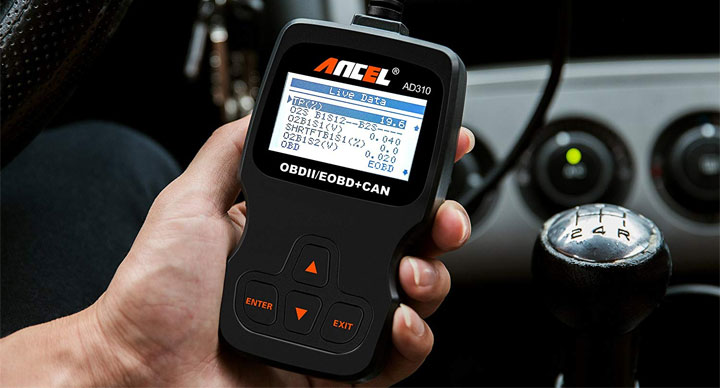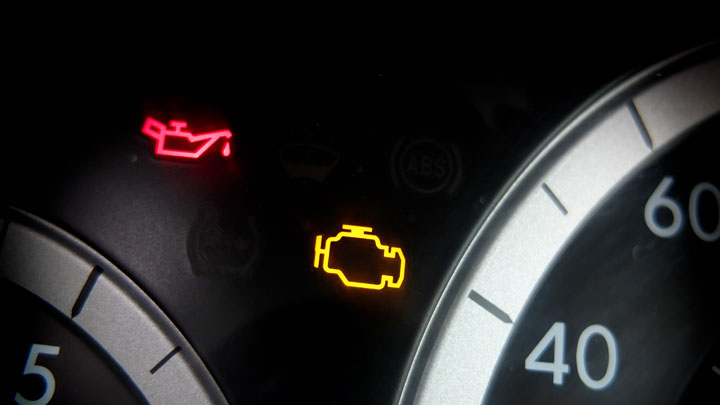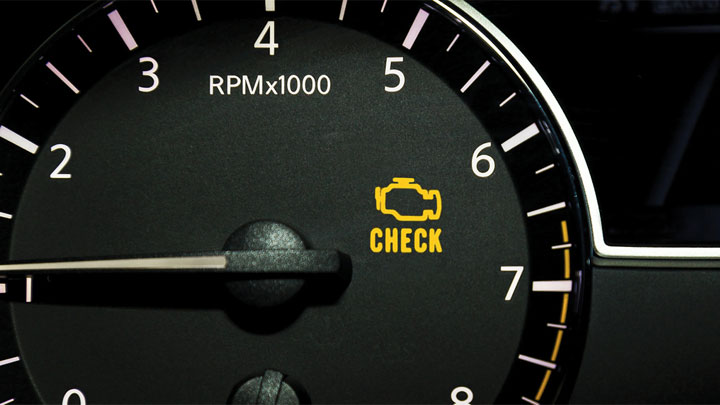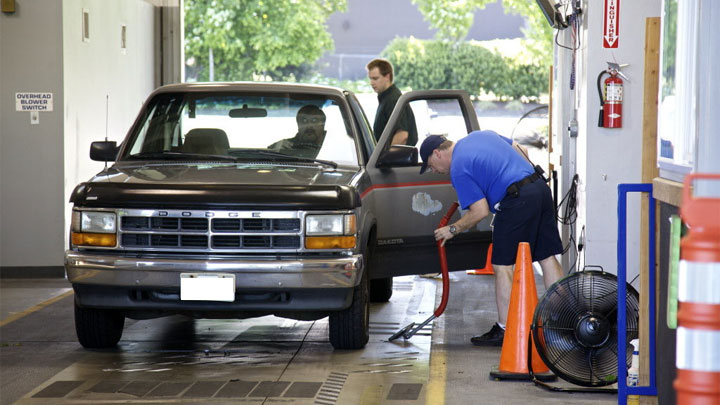How to Reset a Check Engine Light Yourself (3 Methods)
Vehicle emissions have plagued air quality since the automobile’s advent. Not until the 1960s did reduction efforts start and by the 1990s, improvements slashed hydrocarbons dramatically. Thus OBD2 arrived in 1996, bringing the Check Engine Light (CEL).
This CEL, or Malfunction Indicator Light, alarms some drivers. But don’t fear the CEL – it’s there to help you by identifying issues via diagnostic trouble codes. But once you fix the issue, the CEL often remains.
This guide will show you 3 ways to clear the check engine light yourself and save yourself the time and money you’d have to spend for a shop or dealership to clear it for you.

How to Clear a Check Engine Light
There are three ways the CEL may be turned off. This can be done using an OBD2 scanner, by disconnecting the car’s battery, or by exercising patience (ie: simply waiting for the light to extinguish on its own over time).
#1 – OBD2 Scanner

An OBD2 scanner (or automotive scan tool) is an electronic tool, generally hand held, with a connector that can be plugged into your car’s Diagnostic Link Connector (DLC) port.
This port is located under the dashboard to the left or right of the steering column. It may be covered by a plastic cap which must be removed for access. When plugged in, the scanner will communicate with the ECU and display any fault codes related to the illuminated CEL.
Be sure to follow the instructions specific to the scanner you are using. With the ignition turned on, the fault codes displayed should be written down for future reference. The scanner can then be directed to clear the Check Engine light.
Once done, turn the ignition off and unplug the device. When you restart the engine the CEL will be off. Keep in mind that the Check Engine light often comes back if a sensor finds the same problem. So if something is causing your vehicle to consistently run rich (or lean), you need to actually fix the problem as well.
That said, some codes, such as P1000, are simple in nature and often clear themselves the next time you start your vehicle.
Note: Fault codes stored in ECU memory from present and past malfunctions will not be erased by this method of turning off the CEL.
#2 – Battery Disconnection Method

Several steps must be followed for this method to turn off the Check Engine light. This method will also reset the ECU.
A reset will erase functional information from the ECU including OBD2 fault codes and stored engine operating characteristics that have been “learned” over time. More on this in a moment.
First, disconnect the cable at the negative terminal of the battery. Wait approximately fifteen minutes. During this short wait, turn the ignition on for thirty seconds and then off. Repeat this five times. This step will drain any stored electrical power in the ECU. Reconnect the cable to the battery. When you restart the engine, the CEL will be off.
The battery disconnection method performs a hard reset of the ECU. As mentioned above all fault codes and learned engine operating data will be lost. Beginning the next time you go for a drive, the fuel injection and ignition timing behavior for engine idle and off idle behavior will begin to be relearned. This process occurs automatically.
The learning process evaluates engine functionality and driveability and sets this to match your personal driving style. This will take place over the course of your next several driving experiences and may be noted by occasional slightly rough operation.
Important: It bears repeating here that battery disconnection will result in the loss of all fault codes and related data stored in the ECU. Future diagnostic efforts, if required, will not be able to retrieve this often helpful history. And for some cars the clock time and radio station presets will have to be reset.
#3 – Patience (Let It Clear Itself)

The CEL may illuminate for a malfunction which is temporary. This type of fault may self-correct over a short length of time. Or it may simply not repeat. And sometimes you can be patient and wait for this to happen.
Three engine start and stop cycles are required for self-correction to turn the CEL off.
A benefit of this particular OBD2 behavior is that you may not have to race to the shop the instant the CEL comes on. If the car continues to run normally when the CEL lights up, you can delay for three driving cycles and possibly avoid a needless trip to the mechanic.
If, however, when the CEL comes on the engine begins to run roughly or driving behavior becomes noticeably bad, an immediate trip to the shop for help would be well advised.
It’s important to note here that even if the CEL turns off, the fault code will remain stored in ECU memory to benefit any necessary future diagnostics.
What If the Check Engine Light Comes Back On?
The CEL will come on when a serious malfunction occurs. This is known as a “hard fault”. Such a fault will not just go away. So if the OBD2 system has detected such a problem, and you have turned the CEL off by whatever method, it will just turn back on.
Most likely this will occur the very next time you start the engine. You cannot get rid of a Check Engine Light that’s related to a serious malfunction such as if your catalytic converter or O2 sensor has gone bad.
Purpose of the Check Engine Light

The primary purpose of the CEL is to enable visual monitoring of the operational condition of your car’s emissions control system. Beneficial secondary capabilities over the years have also been added.
Depending on the specific make of your car, these may include monitoring of the anti-lock braking system, air bags and heating/air conditioning system. This is accomplished with various electronic sensors.
Other system sensors may include oil pressure, coolant temperature, charging system voltage and engine performance. These sensors communicate with your car’s engine computer, the Electronic Control Unit (ECU).
Related: ECU vs ECM vs PCM vs TCM (What’s the Difference?)
The ECU does the grunt work of evaluating sensor information, recording fault codes (called Diagnostic Trouble Codes) and telling the CEL what to do (ie: light up if necessary). This capability is beneficial because you are immediately warned of problems with your car.
Also, when a fault code is set in the ECU, “freeze frame” information regarding engine operating conditions is also stored. This capability can assist a qualified technician using computerized diagnostics to evaluate your car’s problems and make repairs.
Vehicles built prior to 1996 may include a Check Engine light, but its functionality will be limited since emissions controls and diagnostic systems were then in very early stages of development.
This article will focus on the CEL behavior with 1996 and later OBD 2 systems. With either system, a glowing CEL equals the need to get the car to a shop as soon as possible.
Related: What Does a “Service Engine Soon” Light Mean?
What Causes a Check Engine Light to Come On?
Using signals from a number of sensors and electronic devices, the ECU continuously monitors engine, exhaust and fuel supply system performance as well as several other specific factors related to engine and drivetrain operation.
The OBD2 software in the ECU works primarily to detect problems adversely affecting exhaust emissions. When any of these measurements exceed limits set by the Environmental Protection Agency (EPA), the CEL will come on.
At that moment, the ECU will set one or more fault (or error) codes in its memory. Other engine and drivetrain malfunctions not emissions related may also activate the CEL and set fault codes.
See Also: 9 Causes of a Car Battery Light Coming On
Solid vs. Flashing Check Engine Light

The CEL can display a malfunction in three different ways. It can turn on and stay on indicating the likelihood of a serious problem. But if it occasionally flickers on and off as you drive, this may be telling you that there is an intermittent problem.
For example, the engine could be occasionally misfiring. Fault codes will be set if the light flickers, and you should use an OBD2 scanner to check for codes or get professional help soon if such CEL behavior continues or recurs.
The most serious condition will be a steadily flashing CEL. On-off, on-off, and so forth. Should this kind of display be noted, you should pull to the side of the road and shut off the engine.
In some cases, continuing to drive with the CEL flashing steadily can result in costly damage to your engine and/or related systems. But in other cases, a flashing CEL along with shaking may simply indicate a cylinder misfire.
Why You Shouldn’t Ignore a Check Engine Light

The Check Engine light can be annoying, but it’s actually a good thing. It should not be ignored. As discussed, it can alert you to serious malfunctions that can lead to severe engine or exhaust system damage or, conceivably, another system’s inability to function properly.
Additionally, your car may be emitting unburned hydrocarbons at a level above EPA limits and violating the law.
Also, if you live in one of the thirty states that have emissions inspections, and you have a lit CEL, you may not be able to renew your registration without getting your emissions system repaired. Inevitably, delaying needed repairs will add to the cost of those repairs.
For these reasons, when you have a CEL that will not turn off, you should get your car to a qualified service technician for corrective action as soon as possible.
Your Car’s Emissions System Warranty
As we have seen, the emissions system on your car is complex and can require occasional repairs. Thus you will be pleased to know such repairs may be covered by the Federal Emissions Warranty. How does this warranty work?
This warranty is independent of your new car warranty. It is in force for 8 years or 80,000 miles for the original and any subsequent owners.
It covers a number of the more costly emissions-related components of your vehicle such as the catalytic converters. And if you live in California, a separate state warranty expands the number of emission-related parts covered for 7 years or 70,000 miles.
Often when emissions-related repairs are required this warranty will inadvertently be overlooked. But it can save you a significant amount of money. For more information, contact your state’s consumer protection council.
- DIY Car Repair Tools – Floor Jack and Jack Stands - Dec 12, 2023
- DIY Car Repair Tools – Socket (Ratchet) Wrench - Nov 9, 2023
- DIY Car Repair Tools – Torque Wrench - Apr 20, 2023
